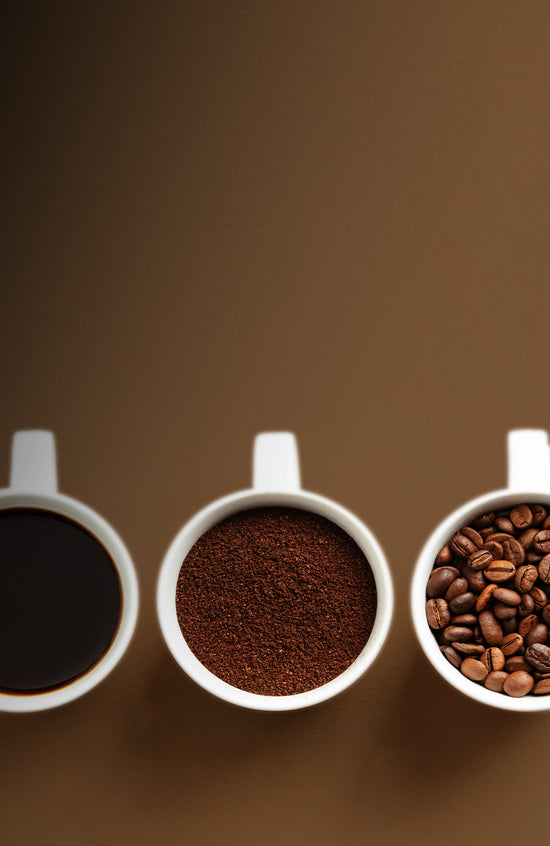1. How does the brewing method affect the flavor profile of coffee?
The brewing method affects the flavor profile of coffee through factors such as extraction time, water temperature, and pressure. Methods like espresso produce a concentrated and bold flavor, while pour-over brewing may result in a cleaner and more nuanced taste.
block content here.
2. What is the difference between Arabica and Robusta coffee beans?
Arabica and Robusta are two primary species of coffee beans. Arabica beans are generally considered to have a more desirable flavor profile with a wide range of flavors, while Robusta beans have a stronger, more bitter taste and higher caffeine content.
3. How should I store my coffee beans to maintain their freshness?
To maintain the freshness of coffee beans, store them in an airtight container away from light, heat, and moisture. Ideally, grind the beans just before brewing to preserve the flavors and aromas.
4. Is it true that darker roasted coffee has less caffeine than lighter roasts?
Contrary to popular belief, darker roasted coffee does not have less caffeine than lighter roasts. The caffeine content remains relatively stable regardless of the roast level, but the perceived strength may vary due to other factors like flavor concentration.
5. How does the altitude at which coffee is grown affect its taste?
The altitude at which coffee is grown can significantly impact its taste. Higher altitudes often result in a slower maturation process, leading to beans with increased acidity, floral or fruity flavors, and greater complexity.
6. What is the ideal water temperature for brewing coffee?
The ideal water temperature for brewing coffee is typically between 195°F (90°C) and 205°F (96°C). This temperature range allows for optimal extraction of flavors without over-extracting or scorching the coffee.
7. Can drinking coffee help improve cognitive function and focus?
Drinking coffee can temporarily improve cognitive function and focus due to its caffeine content. However, the effects vary among individuals, and excessive consumption or reliance on coffee for cognitive enhancement may lead to negative outcomes.
8. What role does the grind size play in brewing a perfect cup of coffee?
Grind size plays a crucial role in coffee brewing. Finer grinds are suitable for methods like espresso, while coarser grinds are better for methods like French press. The grind size affects the rate of extraction, influencing the flavor, body, and strength of the brewed coffee.
9. How does the acidity level of coffee impact its taste?
The acidity level of coffee can significantly impact its taste. Higher acidity can contribute to brightness, fruity or citrus notes, and a perceived 'zing,' while lower acidity may result in a smoother, more mellow flavor profile.
10. What are the environmental impacts of coffee production and how can I choose more sustainable options?
Coffee production can have environmental impacts such as deforestation, water pollution, and greenhouse gas emissions. Choosing more sustainable options involves looking for certifications like Fair Trade, Rainforest Alliance, or Organic, supporting shade-grown coffee, and purchasing from environmentally conscious brands.
11. Is it better to buy whole bean coffee or pre-ground coffee
Whole bean coffee is generally preferable over pre-ground coffee because it retains freshness and flavor for a longer period. Grinding the beans just before brewing ensures maximum flavor extraction, while pre-ground coffee may have already lost some of its aromatic compounds.
12. How can I reduce the bitterness in my coffee without adding sugar?
To reduce bitterness in coffee without adding sugar, you can try using a coarser grind, adjusting the brewing time, or using a different brewing method. Additionally, selecting high-quality beans and ensuring proper storage can help minimize bitterness.
13. Are there any unique and rare coffee varieties worth exploring
Yes, there are unique and rare coffee varieties worth exploring. Examples include Geisha, Bourbon, Pacamara, and Mokka. These varieties often have distinct flavors, aromas, and limited availability, making them highly sought after by coffee enthusiasts.
14. What factors contribute to a well-balanced espresso shot?
Several factors contribute to a well-balanced espresso shot, including the quality and freshness of the beans, the grind size, proper extraction time, water temperature, and pressure. Achieving the right balance between these factors results in a rich, flavorful, and well-textured shot.
15. What is the best way to clean and maintain my coffee brewing equipment?
To clean and maintain coffee brewing equipment, follow the manufacturer's instructions. Generally, regular cleaning with warm water and mild detergent is recommended. Additionally, descaling espresso machines and periodically replacing filters or parts can help ensure optimal performance.
16. Are there any alternative brewing methods besides drip coffee and espresso?
Yes, there are alternative brewing methods besides drip coffee and espresso. Some popular options include French press, Aeropress, pour- over (e.g., V60, Chemex), cold brew, Turkish coffee, and various manual brewing devices like the Clever Dripper or Siphon.
17. How can I enhance the flavor of my coffee without adding extra calories?
To enhance the flavor of coffee without adding extra calories, you can experiment with adding spices like cinnamon or nutmeg, using flavored syrups or extracts in moderation, or incorporating alternative non-caloric sweeteners like stevia or monk fruit.
18. What are the main factors to consider when choosing a coffee grinder?
When choosing a coffee grinder, consider factors such as grind consistency, grind size adjustability, ease of cleaning, durability, and budget. Burr grinders are generally preferred over blade grinders for achieving a more uniform grind.
19. Can I reuse coffee grounds for anything else, like gardening or skincare?
Yes, coffee grounds can be reused in various ways. They can be used as a natural fertilizer for plants, as an exfoliating scrub in skincare routines, or to absorb odors in the refrigerator. However, ensure the grounds are fully cooled and dry before using them for these purposes.

